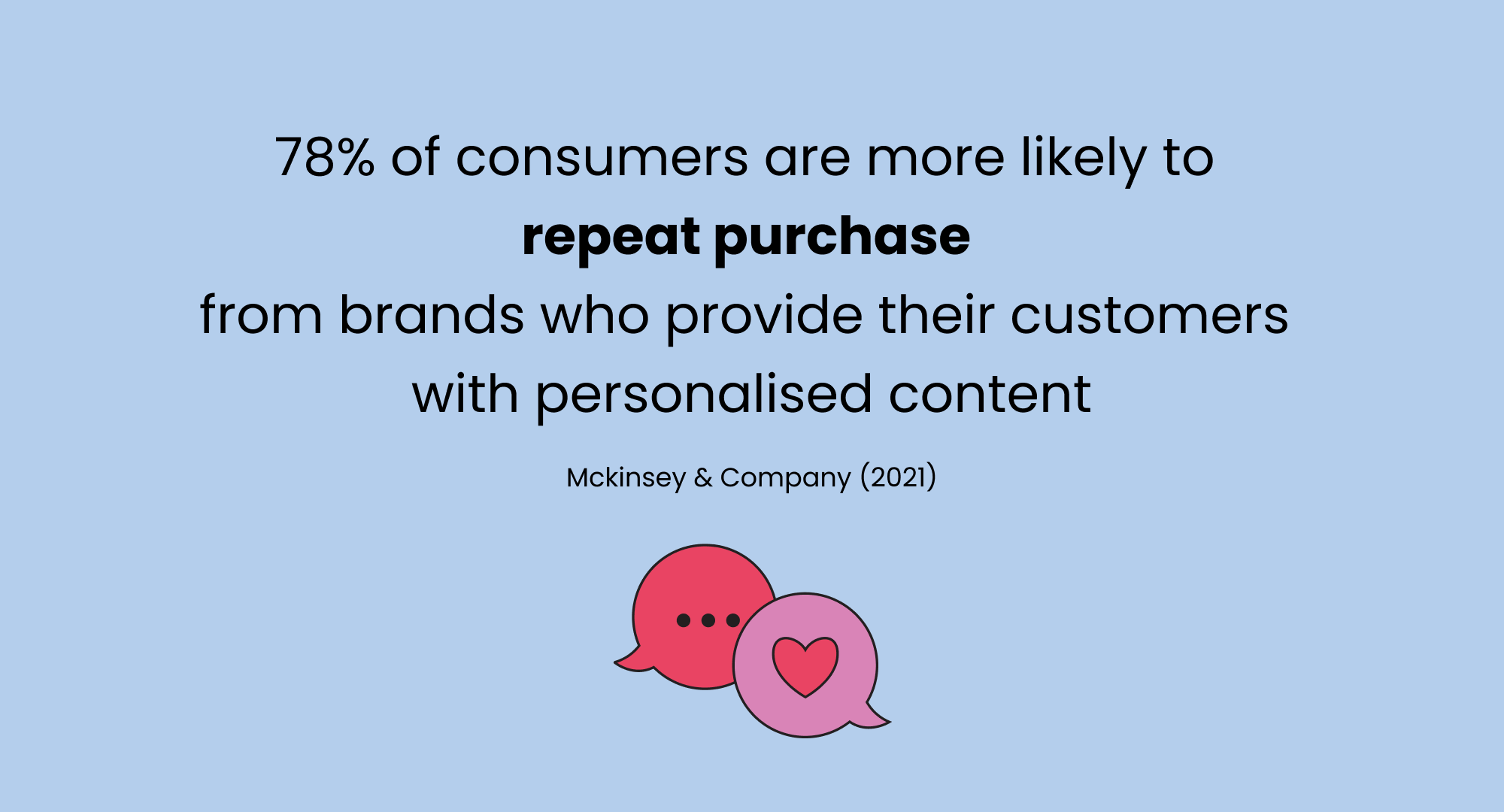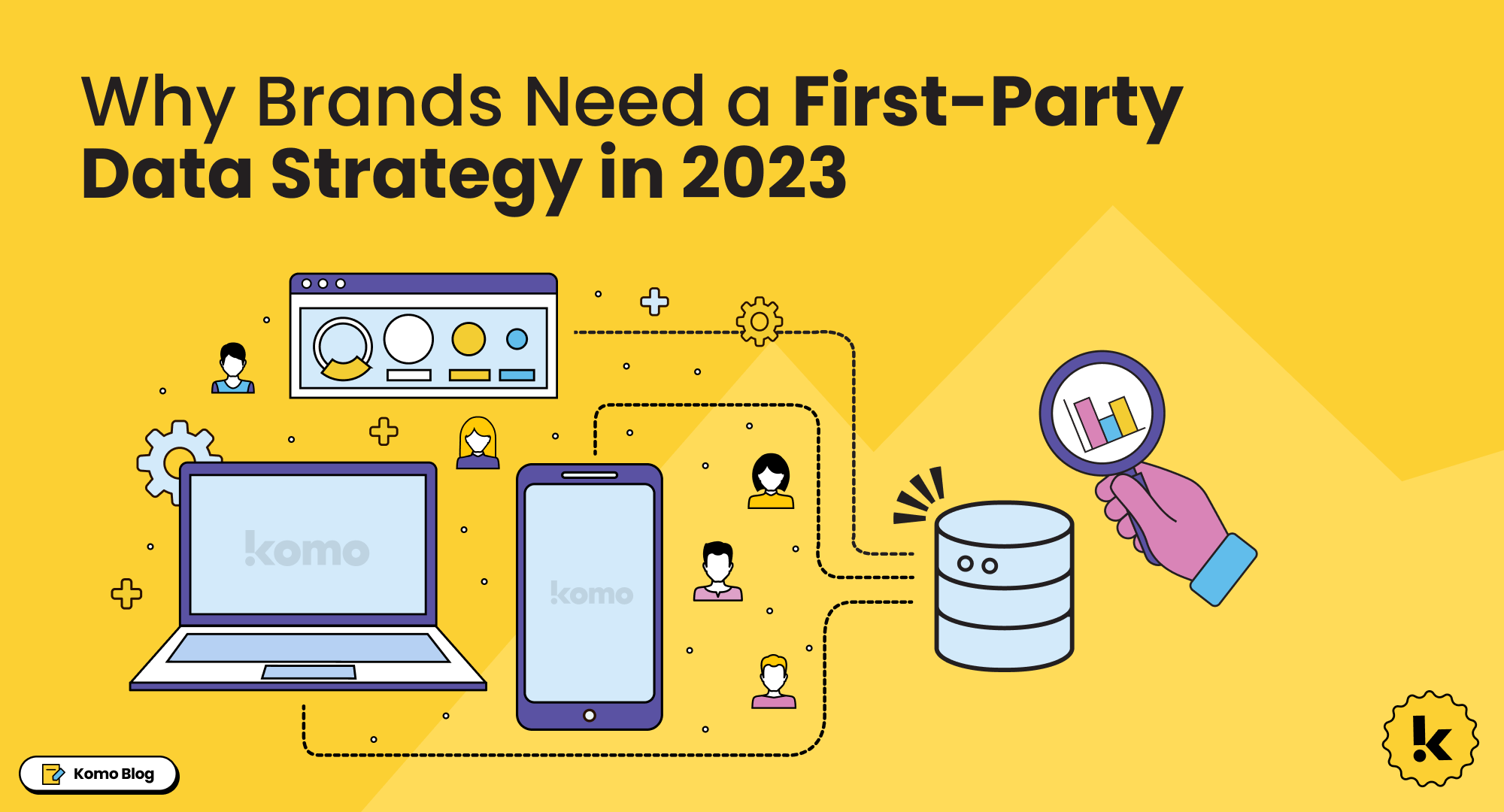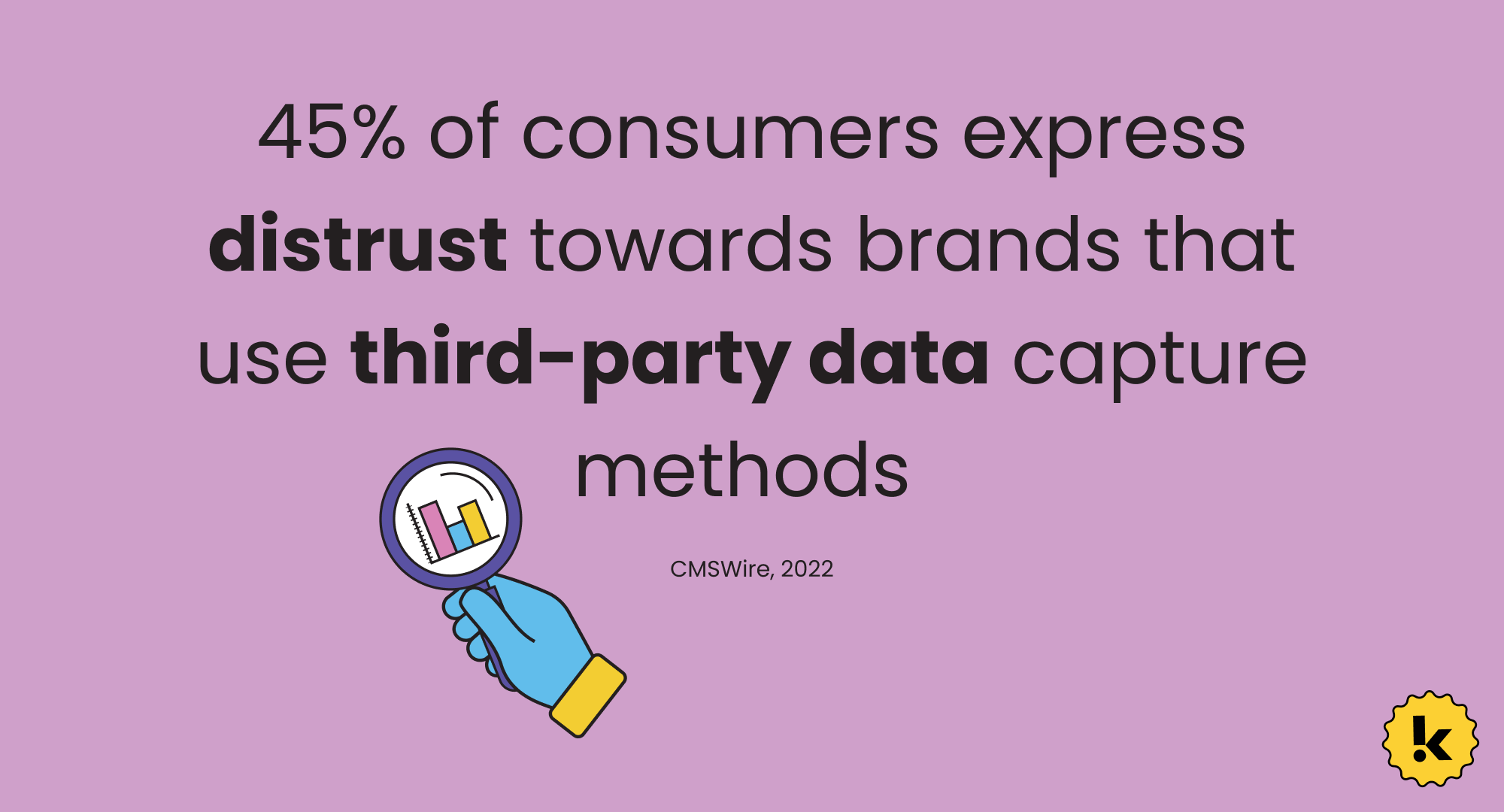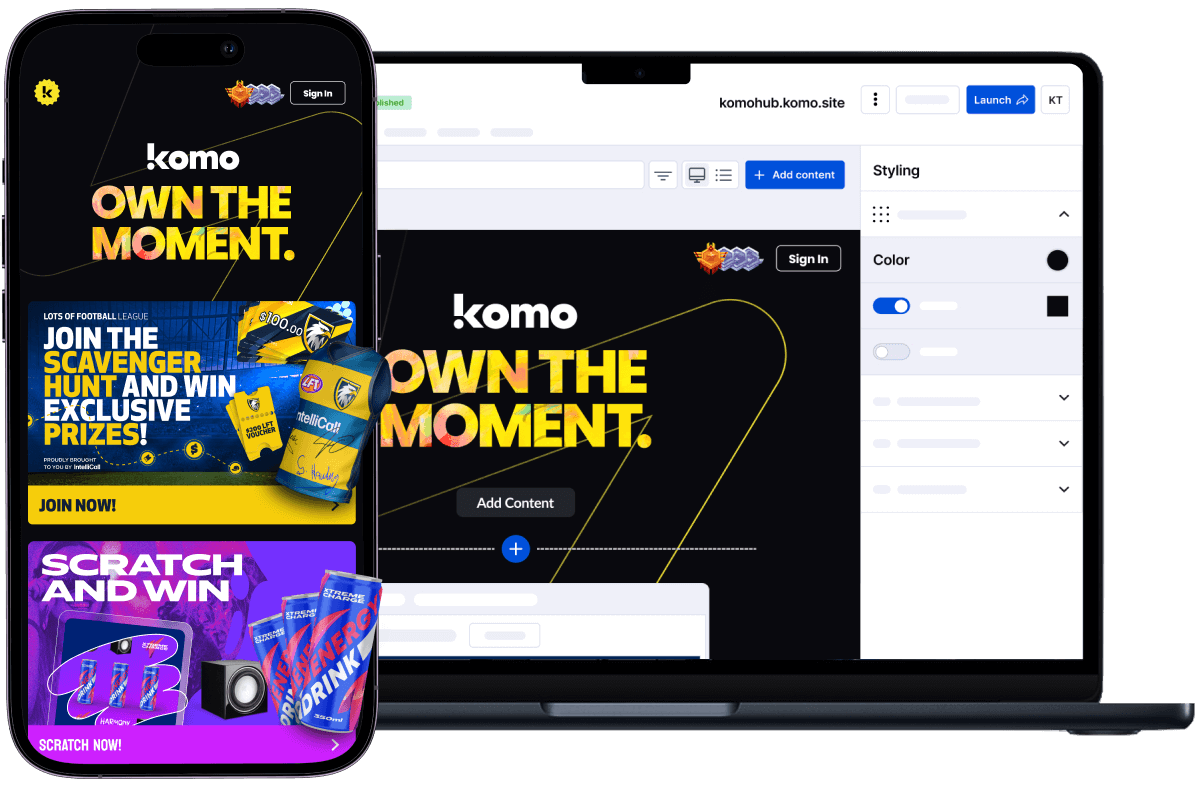Emerging consumer research is showing us time and time again that personalisation is one of the biggest marketing trends going into this new financial year. As we touched on in our last blog post, a Mckinsey & Company study reported that 78% of consumers are more likely to repeat purchase from brands who provide their customers with personalised content, and nearly 80% of these consumers are likely to refer this brand or organisation onto their family and friends.
Beyond repeat purchases and referrals, many consumers feel so strongly about personalisation that brands will lose their loyalty if they don’t deliver a personalised experience. The changes in these statistics over the past two years alone shows that customer experience has become more important than ever before.
Not only does personalised marketing deliver consumers content they actually want to see, but it also makes purchase decisions easier, making it far simpler for brands to convert static users into repeat customers.
So let’s talk more about three trends we’re seeing in regard to personalisation, and how you can implement them to improve your own marketing strategy in terms of personalised content.
1. An Omnichannel Approach is the way of the Future
Believe it or not, personalisation actually has a huge part to play in creating an effective omnichannel approach to marketing. Marketing is slowly becoming a process of meeting consumers where they’re at. And where are they you might ask? They’re everywhere. Research shows that more and more consumers are actively engaging across multiple channels at once. Users want to be able to seamlessly switch between communication channels, and as brands and organisations, we need to follow them.
There are a number of barriers to achieving an effective omnichannel strategy, but MarTech platforms like ours overcome these every time. More on that later…

2. As Cookies are Phased Out, Zero and First-Party Data will Take the Lead
We’ve talked a lot in the past few months about the value of rich data in comparison to relying on third-party sources, and as personalisation gains in popularity, so does the capture of these kinds of data.
Preference data that brands and organisations capture are an incredibly vital aspect of personalised marketing strategies, as they provide accurate information, directly from the source, that allows companies to remarket to their users with content that is in line with their preferences, behaviours and habits.
As Google continues to phase out its third-party cookies, brands and organisations must explore other avenues for capturing other forms of data in order to continue collecting valuable information about their audience.
3. A Conversation that Starts Naturally…
When it comes to personalisation, there is definitely a line between an easy, flowing dialogue between consumer and brand and forcing marketing material onto your target audience every chance you get. But to be fair, this line isn’t always clear.
As we see the trend of personalisation develop, we see the trend being used in many different ways, but one of the most successful seems to be where there is a focus on natural conversation. One of the ways we see this in practice is through remarketing strategies like abandoned cart.

I’m sure we can all say that there’s a brand or website we’re often eyeing off, adding things to our cart and sitting on our hands while we decide whether or not to purchase. An excellent way to start a conversation with your consumer is by remarketing their abandoned cart to them via social media, personalised EDMs or even SMS when they're in this stage.
In this way, we’re using the zero-party data a customer has given us on their product preferences to encourage conversion. See? A conversation that starts naturally…
Komo & Personalisation
So taking these personalisation trends into account, now is the time to reevaluate your tech stack and ask yourself if your brand is able to personalise content seamlessly and efficiently.
Komo’s SaaS platform not only empowers marketers to create a digital destination filled with branded content, games and integrations but also provides a number of ways to feed your audience back personalised content. Capture rich preference data from your audience through data capture forms built into your microsite and build real-time consumer engagement that connects with people’s passions, drives brand loyalty, unlocks first-party data and ultimately increases consumer spending.
Through our omnichannel distribution, be where your audience is and start building a knowledge base that allows you to personalise and reach your consumers on an entirely new level.
Interested in learning more about how Komo can transform your marketing? Check out our webinar page and RSVP to join the Komo conversation and see just how the platform can be used. After something a little more personalised? Request a demo and let us personally introduce you to Komo and how it can work for you and your brand.





